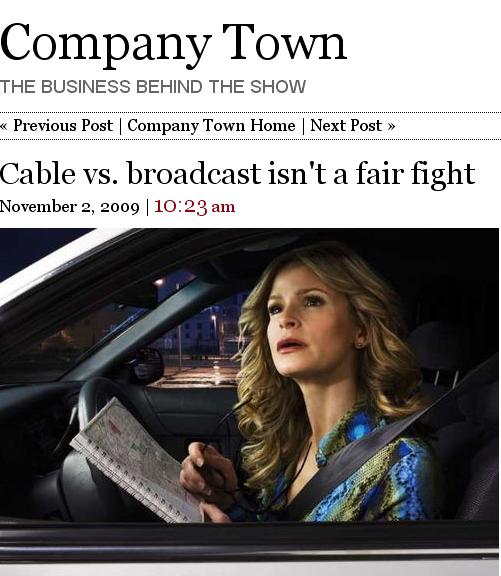Why Cable and Broadcast Don’t Compare
LOS ANGELES: The cable industry has long used broadcasting as a metric for its own success, but the two are entirely different businesses, Joe Flint says in the Los Angeles Times.
“Let’s look at the facts,” Flint writes. “Broadcast networks have one primary revenue stream--advertising. A cable network has a dual revenue stream of advertising and subscriber fees. While advertising revenue depends on lots of factors, including how well a network is doing in the ratings and the economy, the subscriber fees that distributors pay only go in one direction: up. TNT currently gets almost $1 per-subscriber, per-month from cable and satellite operators, according to SNL Kagan.... TNT is in over 90 million homes. That translates to a lot of gravy.”
Overhead differs for the two as well. Flint notes that TNT produces seven hours of original programming. The Big Three networks produce twice that much, while Fox produces another 15 hours, all for prime time. In addition, cable networks are often built on off-network shows. TNT has a heavy rotation of “Law & Order.”
“Ultimately cable and broadcast are two very different businesses,” Flint said. “Until broadcasters figure out how to build a sustainable second revenue stream or distributors start rebelling against constantly rising cable programming costs, it is absurd to act like this is a fair fight.”
Flint’s full commentary is at the Los Angeles TimesCompany Town section.

The professional video industry's #1 source for news, trends and product and tech information. Sign up below.
